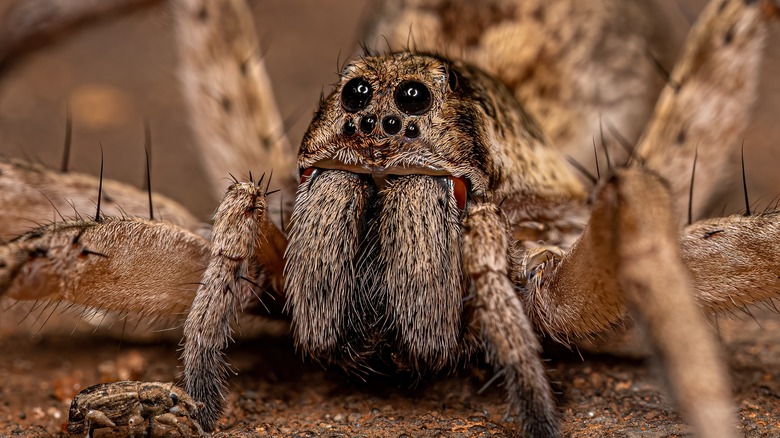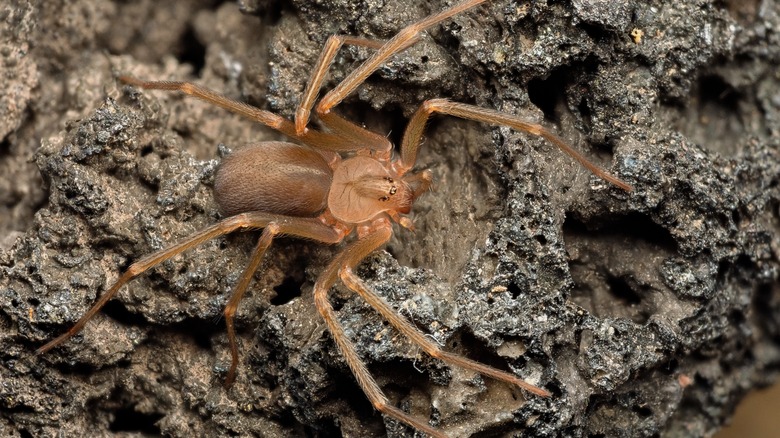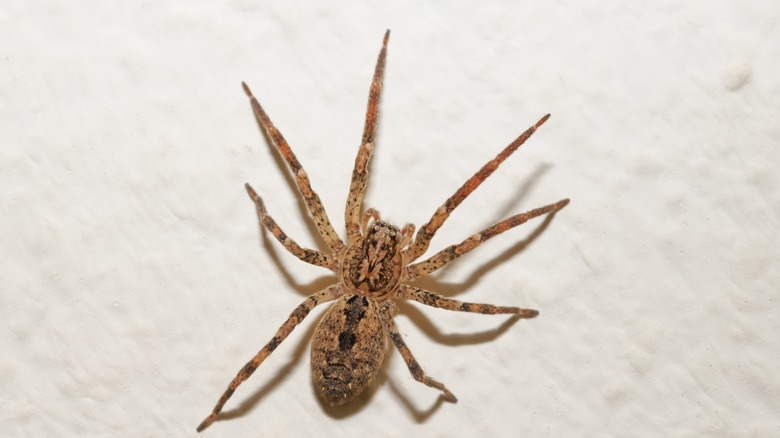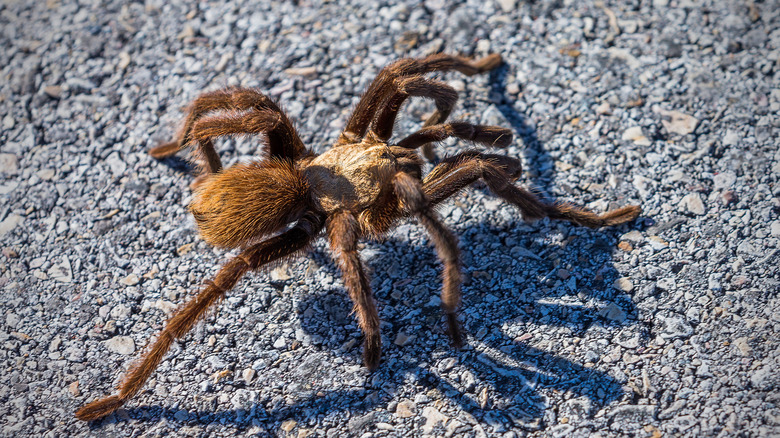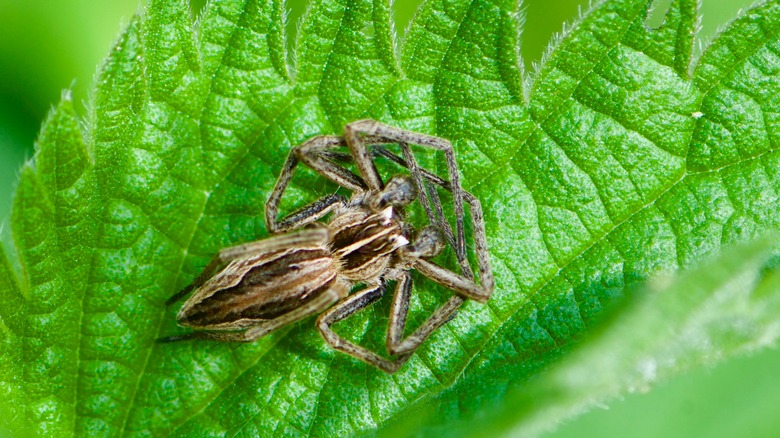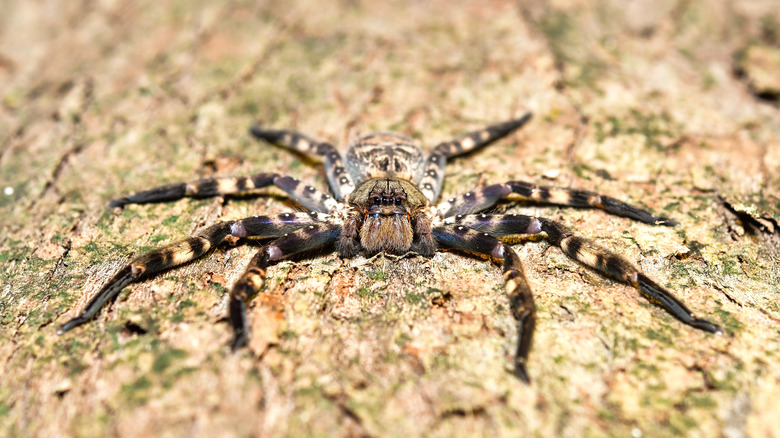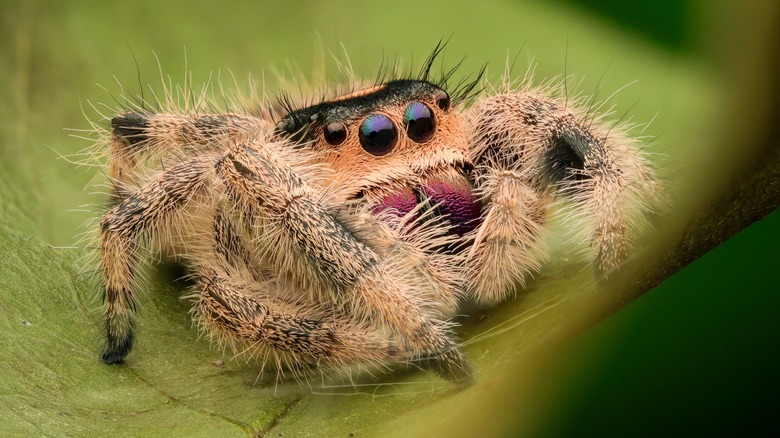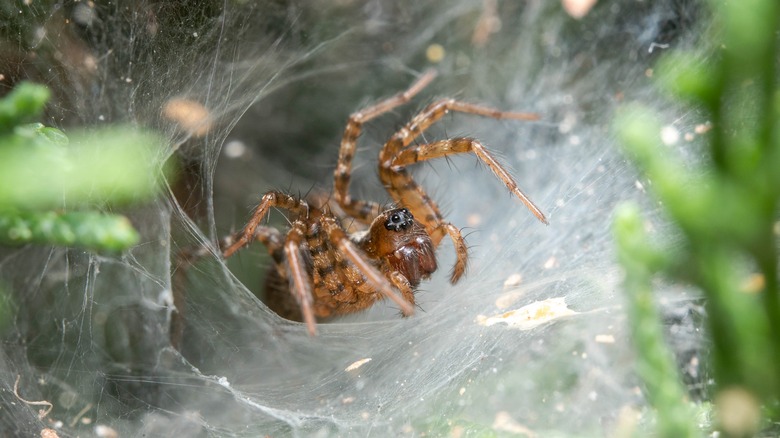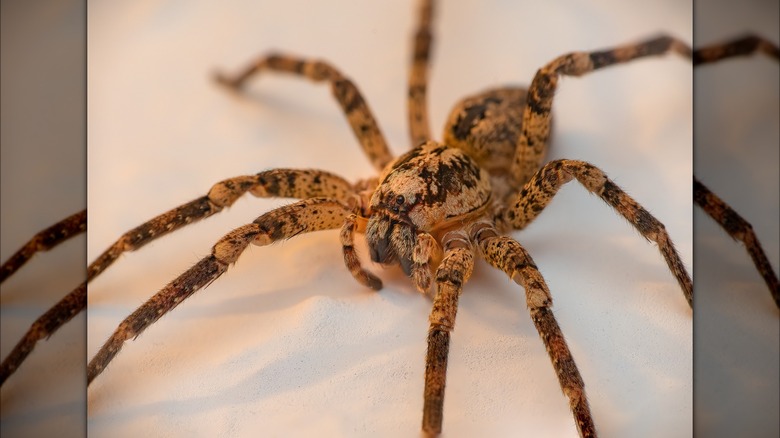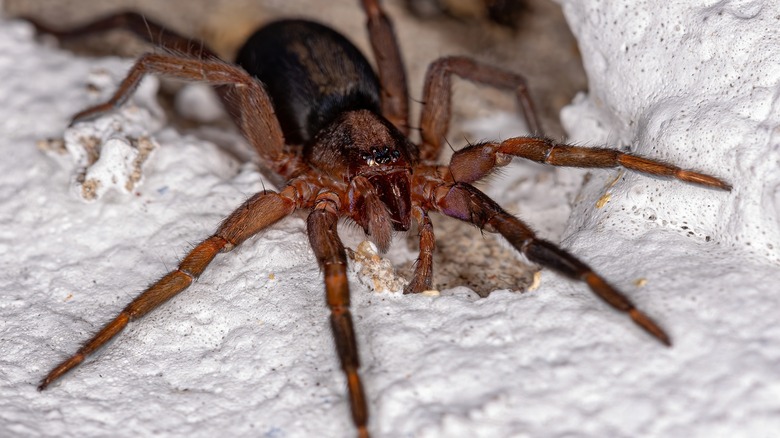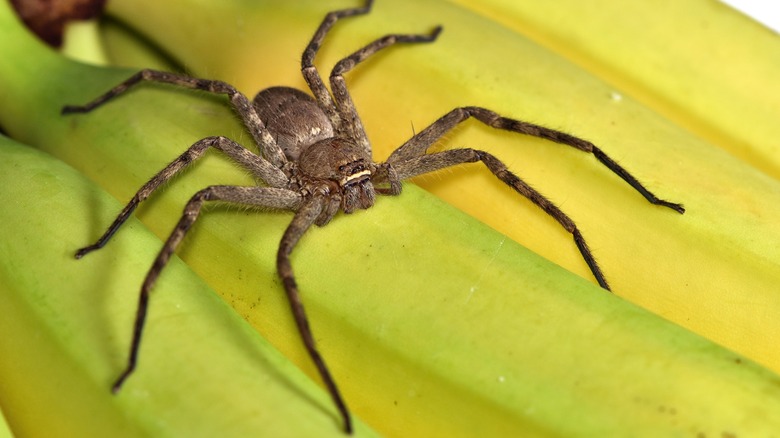10 Common Wolf Spider Look-Alikes You Might Find At Home (& Which To Worry About)
Having the penchant to nippily scurry along, stalk, and clean up corpses of a myriad of insects, scaring the wits of anyone crossing their paths deep into the night? Leaving humans seething in pain for a day if they feel threatened, even though they were hitting on your houseplants? And not measuring bigger than a paperclip, but going by the name "wolf?" It's no wonder wolf spiders are considered the stuff that fuels nightmares and unwelcome house guests when they slip in during the fall for warmth. Naturally, the same treatment is doled out to any spider rocking a mien that could, at its best, pass for a discounted wolf spider knockoff.
Wolf spiders aren't a homogenous group — further mudding the waters. They alone account for about 250 species that differ in their stripes, color, and sizes, making positive identifications difficult and false detections unwittingly easy. For instance, a few hairier wolf spiders falling on the bigger side of the spectrum could give off the impression of being tarantulas. On the flip side, some could be faulted for trying to intimidate homeowners by brown-passing as the much-feared recluse spiders, albeit gushing loose on the ground. On rare occasions, hobo, huntsman, jumping, or nursery web spiders may be faulted for appropriating the flairs of wolf spiders, as you'll learn below. Quick tip: When in doubt, peep into their eyes (Bugguide might help).
1. Brown recluse spider
The distinct dark brown fiddle shape that teases out menacingly from the brown recluse spider's (Loxosceles reclusa) eyes down its back should leave no room for confusion. Yet it does, especially when they're young because they're still developing their characteristic markings, causing many homeowners to confuse their tan-brown bodies for similarly-colored wolf spiders. You can tell the difference between a safe wolf spider and a dangerous brown recluse — yes, dangerous enough to warrant medical attention if it bites — from their set of eyes, with wolf sporting the standard eight vis-à-vis six for the recluse.
2. Hobo spider
While they exhibit ever-changing coloration, hobo spiders (Eratigena agrestis) can masquerade as their wolf cousins when costumed in brown colors and markings, hiding in basements like them. Ideally, figuring out how to spot the difference between a wolf spider and a hobo spider has no benefits, save for knowledge, as their bites aren't fatal. But if you must, check for funnel webs that hobos spin (wolfs don't) if you live in the western US region. Also, know that wolf spiders are bigger, upwards of 1 inch, with their eyes arranged in three rows versus two for hobos.
3. Tarantula
Being a member of a different family, Theraphosidae, has rendered tarantulas no respite from being misidentified as wolf spiders, all because they happen to be brown and hairy. However, even the smallest tarantulas are larger than the biggest wolf spiders, not to mention stockier, with their abdomens often veering toward black rather than brown. Moreover, they're only found in the US southwest region, unlike the wolf spiders' nationwide presence. Their ubiquitous popularity as home pets is a clear sign that even when they bite (which they forewarn through raised legs), they won't send their benefactors to the emergency room.
4. Nursery web spider
The nursery web spider (Pisaurina mira) is another poisonous arachnid you might be mistaking for a wolf spider, although their venom is nothing to write home about (thankfully!). Besides being sized a tad smaller, nursery spiders are different on account of their eyes since they're equally proportioned and set in fours in two rows. In comparison, wolf spiders' eyes are arranged in three rows of different sizes. Their mothering behavior is just as different, with nursery webs carrying egg sacs in their jaws compared to spinnerets for wolfs, with the spiderlings eventually spooling on her back.
5. Dark fishing spider
Another member of the Pisaurina family, it's no surprise dark fishing spiders (Dolomedes tenebrosus) can sometimes also pass off for a wolf spider. However, unlike its doppelganger, the fishing spider isn't evenly brown, with white markings sparingly peppered on its lanky body, alternating black-brown stripes straddling its legs, and a marked "W" band discernible on its abdomen. Mostly found in spring, inhabiting tree cavities or firewood logs, they can move inside and remain through the summer end. However, dark fishing spiders are unlikely to bite even when goaded, so they can be safely ignored.
6. Jumping spider
Jumping spiders (Salticidae), aka the epitome of cute spiders, at their biggest ½ inch size, may fool arachnophobes into thinking they've chanced upon a still-maturing wolf spider before it's peppered with its mini army of spiderlings. The shared color spectrum of brown and gray to black doesn't help, either. However, their eyes are the key differentiating factor, with the gargantuan front pair flanked by rows of six other, smaller eyes. Also, they're most active during the day, prancing above ground amidst the foliage for insects, while wolf spiders are ground-level, nocturnal hunters. Their bites aren't medically significant.
7. Funnel weaver spider
Also known as garden spiders, funnel weaver spiders (Agelenidae) are brown-bodied arachnids that have darker striations running alongside their legs with quick speed to boot, birthing the comparison (or confusion) with wolf spiders. However, while they can be occasionally found on the ground sniffing around the rocks for prey, they tend to spend the majority of their time siphoning silk into webs and turning them into homes, in sharp contrast to wolf spiders, who love to hunt and abhor weaving. Also, their eyes are the same size. US-based funnel weavers aren't harmful, although their bite stings.
8. False wolf spider
A Mediterranean import, the false wolf spider (Zoropsis spinimana) has homeowners fooled with its black-mottled and brown frame, mimicking wolf spiders. However, they give themselves away, courtesy of the sharp, vertical black streak on their front as it flares out in multiple strands, dissimilar from the single flared, rhombus-like markings present on the abdomens of wolf spiders. If you're a keen observer, you might notice how their eyes are transfixed at the front edges rather than hoarding some space nearer to their cephalothorax (the section where the legs connect). Let the harmless prowlers enjoy their solitary hunt.
9. Prowling spider
The prowling spiders from the Syspira genus have little in common with their pale-bodied, long-legged sac spider brethren from the shared family, Miturgidae. Instead, they display a wolf spider-like semblance, especially if they exist in similarly arid parts of the southwestern US region. They key you in on their existence from spring through summer by transfixing you with their welcoming gaze that spreads neatly like an eight-eyed smiley rather than the foreboding, three-rowed arrangement communal to the Lycosidae family. Since much is unknown about them (thanks to all the taxonomic confusion), it's best to keep your distance.
10. Huntsman spider
Also known as the banana spider (because it allegedly entered the US via banana shipments), the huntsman spider showcases a similarly brown textured body as a wolf — sometimes. However, the misidentification doesn't persist for long, as these spiders grow a crab-like flattened body that is wider than it is long. Besides, they aren't as hairy, with their tufts mainly concentrated on their legs. Also, they are only observed in warmer climates, in and around California and the Gulf Coast. Handling them will leave you with an agonizing bite, although they aren't poisonous per se.
